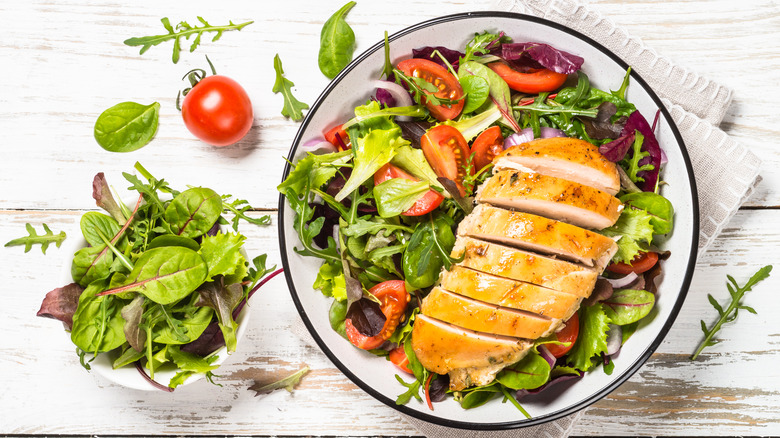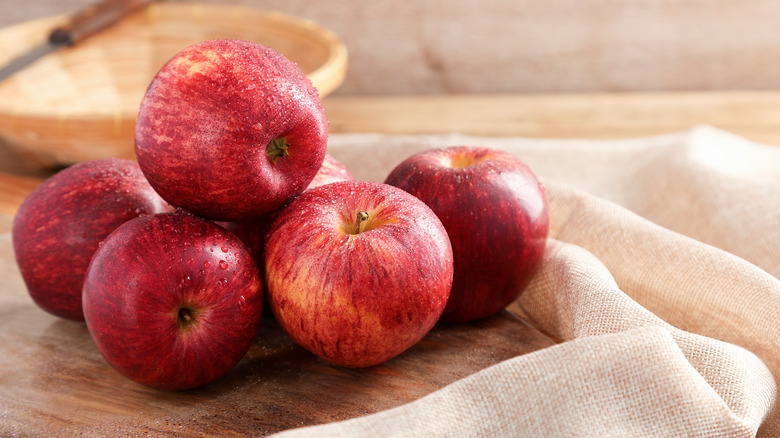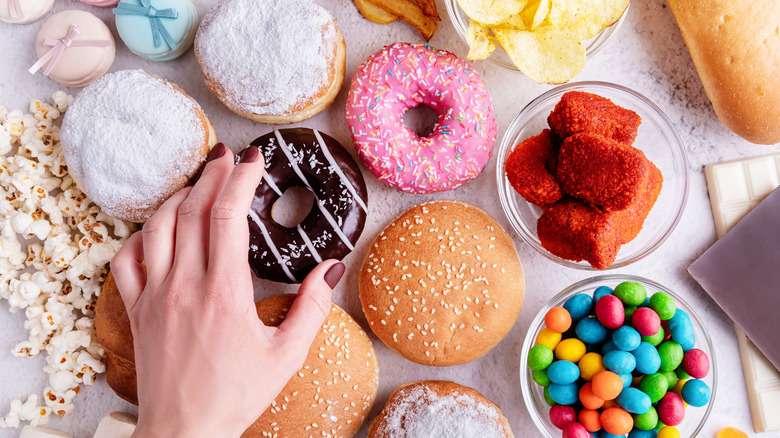What's The Difference Between A Low-Carb Diet And A Slow-Carb Diet?
From tasty pasta to sugary cakes, foods that contain plenty of carbohydrates are oh-so-tasty. But, as the saying goes, if it tastes too delicious to be good for you, it probably is. According to Livestrong.com, this mantra holds especially true in the standard American diet, which has seen an increase in the amounts of processed foods that are packed full of carbs.
As delicious as they may be, foods high in carbs have a way of adding on the pounds like no other group because of how quickly they leave us feeling hungry again. On the other hand, foregoing eating carbs altogether is actually doing your body a major disservice. The Cleveland Clinic confirms that carbohydrates are an essential part of any healthy diet.
Your body uses the glucose it derives from them to give you the energy to make it through the day. The low-carb and slow-carb diets are two ways to help you find that important balance when simplifying your carb intake. Although their names sound alike, there are several differences between the two that can help you decide which one will work best for you.
The slow-carb diet limits one type of carbohydrate
According to the Diet Doctor, the low-carb diet was created when dietitians realized limiting natural fats didn't really work. Instead of helping us to lose weight, low-fat foods make us gain more in the long run. That's why so many turned to the low-carb diet. If you're familiar with the keto and paleo diets, you already know the basics of what the low-carb plan is — it's essentially all about lowering your total carb intake.
People on a low-carb diet do their best to avoid sugar and starches such as pasta and other processed foods. It is recommended to replace these foods with meat, eggs, veggies, and natural fats. The slow-carb diet, meanwhile, was detailed in Timothy Ferriss's book, "The 4-Hour Body." Unlike the low-carb diet, Ferris' plan doesn't group all carbs together, requiring you to avoid them completely. Instead, it suggests staying away from just one type: white carbs.
White carbs, also known as simple carbs, go right through your body. These include pasta, rice, and dairy products. As registered dietitian Brigitte Zeitlin explained to Women's Health magazine, simple carbs do little to satiate your hunger, but complex carbs, such as kale and spinach, work their way through your system slowly. This makes you feel fuller for longer while increasing "your body's ability to break down fat for energy and reduce your overall fat stores."
You get one cheat day with the slow-carb diet
Everyone should be excited to hear about this crucial difference between a low-carb and a slow-carb diet — Healthline reports that a slow-carb diet allows you to take one cheat day out of the week. On this day, you can eat whatever fried, greasy foods you'd like and drink whatever sugary drinks you're craving too. There's no need to limit yourself either, although obviously, it's never a good idea to overdo it.
During the other six days of the week, meanwhile, you're allowed four meals a day, each of which must adhere to the rules of no white carbs or empty calories. A low-carb diet, like the popular keto diet, requires significantly more commitment when it comes to changing your eating habits. You'll need to be ready to give up carbs almost entirely, with no cheat days allowed (via WebMD).
The trick to an effective low-carb diet is to train your body to burn fat for energy instead of the carbs from which it's usually derived. Whichever carb-restrictive diet you think would work best for you, remember to check in with your doctor or nutritionist before embarking upon it to ensure you get the desired results in the long term.


